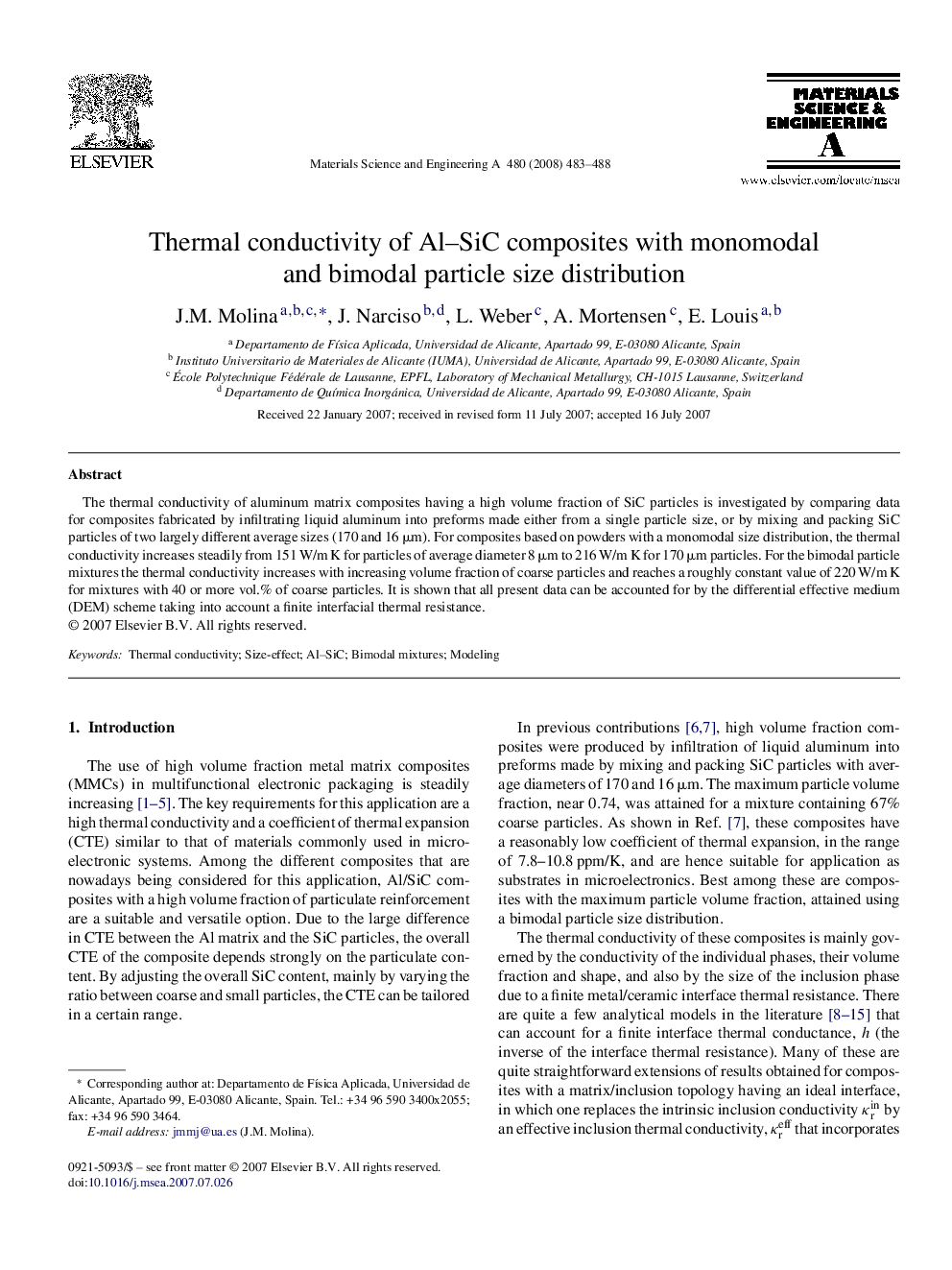| Article ID | Journal | Published Year | Pages | File Type |
|---|---|---|---|---|
| 1582682 | Materials Science and Engineering: A | 2008 | 6 Pages |
The thermal conductivity of aluminum matrix composites having a high volume fraction of SiC particles is investigated by comparing data for composites fabricated by infiltrating liquid aluminum into preforms made either from a single particle size, or by mixing and packing SiC particles of two largely different average sizes (170 and 16 μm). For composites based on powders with a monomodal size distribution, the thermal conductivity increases steadily from 151 W/m K for particles of average diameter 8 μm to 216 W/m K for 170 μm particles. For the bimodal particle mixtures the thermal conductivity increases with increasing volume fraction of coarse particles and reaches a roughly constant value of 220 W/m K for mixtures with 40 or more vol.% of coarse particles. It is shown that all present data can be accounted for by the differential effective medium (DEM) scheme taking into account a finite interfacial thermal resistance.
